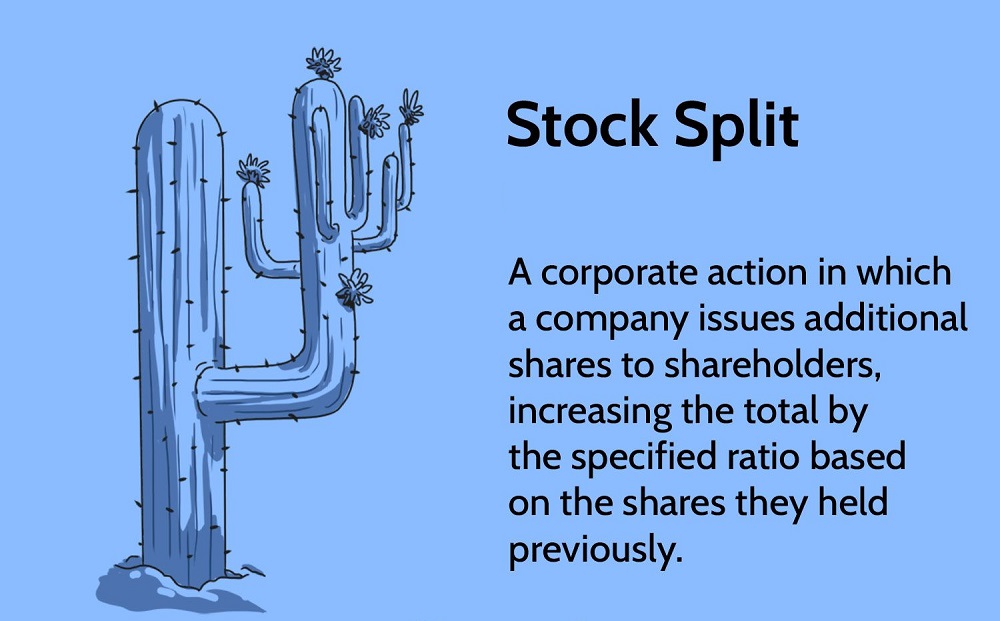Know what stock split is and how it works
If we talk about the most expensive stock in the Indian stock market, the first name that comes to our mind is MRF. The price of this share is around Rs 1 lakh and looking at its price you must be thinking that the performance of this company must be very good, that is why its price is so high. But the reason behind this is something else. The name of that reason is that MRF stock was never split. Now the question in your mind will be that what is this stock split and how does its absence increase the share price? We will try to know all these things in today’s article.

What is stock split?
Stock split means division of the company’s shares or dividing the company’s shares into several parts. Usually, when the share prices of a company become very high, then the company resorts to stock split to balance them. Through stock split, a share is divided into many parts due to which its price also reduces by dividing it into many parts. Even people with less capital than this are able to trade and invest in this share. After splitting the stock, their number increases in the market, which brings liquidity in it, that is, due to the presence of large quantity of shares, they can be easily bought and sold. It is worth keeping in mind here that stock split only increases the share count while the market value of the company and your investment value remain the same.
Example of stock split
In October 2021, IRCTC had announced stock split of its shares in 1:5 ratio, the face value of which was Rs 10. The ratio was 1:5 i.e. one share of IRCTC was to be divided into five parts. Here, keep in mind that the face value and market value of the company’s shares are different and the stock split is declared at the face value. In this case, if the face value of the share was Rs 10, then it was divided into 5 parts of Rs 2 each and if it was being traded in the share market at Rs 1000, then after the split the price of each share would have remained Rs 200. That means, if the investor had 100 shares of the company, then after the stock split the number of those shares would have increased to 500. This increased number of shares is credited to the investor’s demat account a few days after the share split. During the entire process of stock split, only the number of stocks increases while the value of the investment remains the same. This will become clear to you from the details given below.
Value of investment before stock split:
share price 1000
number of shares 100
Investment value 1000*100= 100,000
The value of the investment after the stock split will be:
Share price 1000/5= 200
Number of shares 100*5 = 500
Investment value 200*500= 100,000
It becomes clear from the above calculation that due to stock split the share count increased from 100 to 500 but the share price also decreased from 1000 to 200 rupees. Thus, a stock split only increases the share count and not the value of the investment.
Why does a company do stock split?
A company mainly does a stock split for two reasons:
To prevent the stock from becoming too expensive: If the performance of a company is good then it is natural for its share price to increase. If the company does not split the stock for a long time, its price increases so much that it is not possible for small traders to trade or invest in it. For example, MRF shares which have become very expensive due to non-split. Due to being expensive, it becomes out of reach of common people and people are not able to invest in it even if they want to. Therefore, share prices are reduced through stock split so that everyone can easily trade and invest in it.
To increase liquidity: Liquidity means how easily shares of a company can be bought and sold. If the price of the share is high and the number is less then there may be difficulty in buying and selling it because due to the high price people will not buy it and even if they want to buy it, it may not be easily available in the market. For this reason, through stock split, the price of shares is reduced and their quantity is increased so that the investor can buy and sell them whenever he wants without any hassle.
Impact of stock split on investment
Stock split has no impact on the investment or share value. Due to stock split, only the count of shares increases due to which their price also decreases. Whereas earlier the investor had less shares at a higher price, after the stock split he gets more shares at a lower price.
What is reverse stock split?
In reverse stock split, a company reduces its number by merging its existing shares in the market. This is the opposite corporate action of a stock split. While in a stock split, the number of shares increases when they are divided, in a reverse stock split, when the shares are merged together, their number decreases. Here it should be kept in mind that in both the cases there is no impact on the value of shares, only their count increases or decreases.
Conclusion
Stock split is a corporate action that is taken from time to time by almost every company. It makes a company’s shares affordable for the common people and works to increase liquidity in the stock market. We hope that our article has answered your stock split related questions. If you still have any question in your mind, you can ask us in the comment section.

